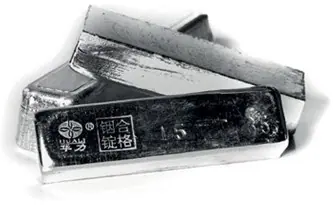The Metal Behind the Screen That Powers Everyday Life

Indium might not have the fame of gold or silver, but it’s quietly powering the world behind your screens — literally. Found in everything from smartphones and solar panels to LED lights and flat-screen TVs, this soft silvery metal is a linchpin of modern technology. Its supply? Limited. Its importance? Growing.
Whether you’re simply curious or wondering what makes your touchscreen work, this FAQ explores the fascinating world of indium.
🔬 Properties & Physical Behavior
Indium is a soft, silvery metal best known for its use in touchscreens and solar technology. It’s part of the post-transition metal group and is typically found as a byproduct of zinc mining. Despite its metallic sheen, it’s so soft you can slice it with a butter knife, and if you try to bend it, it makes a crackling sound.
Yes, indium is very much a metal, albeit a quirky one. It’s malleable, ductile, and conductive, which is why it’s so widely used in electronics. On the periodic table, you’ll find it in Group 13, alongside aluminum and gallium.
In its pure form, indium is silvery-white with a brilliant metallic luster. It has a very soft texture, almost like lead, and it’s so malleable that you can dent it with your fingernail.
Its atomic structure allows electrons to move freely between atoms, making the metal easy to shape and bend. This malleability is exactly why it’s so useful in solders and coatings.
📖 History & Discovery
Indium was discovered in 1863.
Indium was discovered by two German chemists, Ferdinand Reich and Theodor Richter, who isolated the metal while analyzing zinc ores during their work at the Freiberg Mining Academy in Germany.
Indium’s name comes from the indigo-blue color seen in its spectroscopic signature, not because it came from India (a common misconception).
Indium sits at atomic number 49, right between cadmium (48) and tin (50). It’s a member of Group 13 and Period 5.
🌍 Origin & Production
Indium is not mined directly. It’s typically recovered as a byproduct of zinc, lead, and copper ore processing. The main sources are countries with large-scale zinc smelting operations.
Indium is scattered throughout the Earth’s crust, but in extremely low concentrations. Economically viable recovery happens during the refining of zinc ores, where indium concentrates can be extracted.
China leads global indium production, followed by South Korea, Canada, and Japan. Together, they account for the vast majority of annual output.
The United States has limited domestic production and relies heavily on imports, particularly from China. Strategic stockpiles may exist, but indium is classified as a critical mineral due to its supply vulnerability.
⚙️ Uses & Applications
Indium is crucial for modern electronics. Its main role is in Indium Tin Oxide (ITO), a transparent conductive coating used in touchscreens, flat-panel displays, and solar cells. It’s also used in solders, LEDs, and medical imaging devices.
Because it enables the technologies we rely on every day, from smartphones and TVs to renewable energy systems. Its unique ability to conduct electricity while remaining transparent makes it irreplaceable in display and photovoltaic industries.
Indium’s price is expensive for several reasons. First, it’s not mined directly but instead recovered as a byproduct of zinc ore processing, which naturally limits its supply. Furthermore, global production is concentrated in just a handful of countries, with China dominating output, which creates potential bottlenecks and geopolitical risks. Its importance in fast-growing tech sectors, such as solar energy, smartphones, flat-screen displays, and medical imaging, further drives demand. Lastly, recycling efforts remain inefficient, meaning that most of the world’s indium needs still have to be met through new production, which keeps prices elevated.
🧪 Safety & Handling
Indium is generally considered safe for industrial use in solid form. However, certain compounds and fine indium dusts may pose respiratory risks if inhaled repeatedly in unprotected environments.
Please don’t. While small doses of indium salts have been used in experimental medicine, indium is not meant for human consumption. Its biological effects are still not fully understood — stick to eating things that don’t come from a smelter.
Surprisingly, it’s been described as “sweet” — but this is not an invitation to sample it. Taste tests are best left to chemists with lab-grade safety protocols.
In normal consumer-facing products, no, but in industrial settings, indium exposure should be carefully managed. Chronic inhalation of indium compounds (like in recycling or manufacturing) has been associated with lung issues in rare cases.
💼 Buying, Investing & Storage
Small amounts can be found on hobbyist websites, but these are unsuitable for industry buyers or serious investors. Reputable metals dealers, such as Strategic Metals Invest, offer indium in investment-grade purity, accompanied by full documentation and professional storage options.
You can invest in indium by purchasing and owning physical indium, either alone or as part of a diversified basket of strategic metals. Strategic Metals Invest offers a fully certified purchase process, secure tax-free storage, and a straightforward resale option.
Indium should be stored in sealed packaging, away from air and moisture. For investors, the safest option is professional storage in a high-security vault like METLOCK in Frankfurt, offering optimal protection and resale readiness.
From its roots in 19th-century chemistry labs to its starring role in 21st-century electronics, indium has come a long way, and it’s not done yet. As demand for tech and green energy surges, so does the importance of this unsung hero of the periodic table. For investors seeking a tangible asset that’s anything but ordinary, indium offers a compelling opportunity. Still have questions? Contact us for more information.


